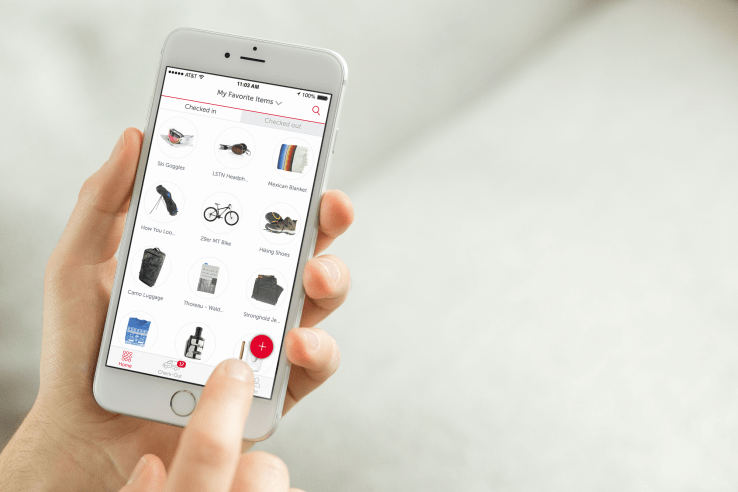
Omni is trying to find a solution for the problem of shrinking apartments and rising rent in urban areas. The company launched their iOS app in the Apple App Store today, the first full release of a product that has been in the works for a while.
Omni has been operating in the San Francisco area for several months now, working with a limited user base and distributing its mobile product on a test basis. The company is trying to build an on-demand warehouse for bags of items that users ask to be picked up. Omni will then unpack boxes or bags of items that it receives, itemizing every item and cataloging a high-resolution photo of it. Once items are in Omni’s database, users can withdraw them on two hours’ notice.
The company is just getting started but has already attracted the attention of no less than 24 investors who have piled into Omni’s seed round. Investors include Formation 8, Shervin Pishevar, and Scooter Braun. Their reasoning is fairly apparent. As the on-demand economy grows, backers are hoping to get in early on what could be an easy extension of the on-demand model that solves a pain point for people living in urban areas where space is at a premium. You could even imagine a company like Amazon, with its extensive physical warehouse infrastructure, potentially getting involved in an area like this one day, too.
The company charges $0.25 per item per month for items that weigh less than 25 pounds and fit within the form factor of a standard airline carry-on bag. Items larger than that cost $2 per item per month. Omni can however at its own discretion choose to not store any item.
Omni’s product is similar in many core facets to MakeSpace, a New York-based startup that gives users storage bins that they can request on-demand at $25 per month for four bins. While Omni’s product adds itemization and item-specific requests, MakeSpace’s rapid growth does allude to the size of the market Omni is entering.
What separates Omni from being a warehouse with a mobile app is the work that the company does on the backend after your items are collected by an employee the company calls an ‘Omni Concierge’. Warehouse staff sort through your items, and categorize them using high-resolution photos. It isn’t clear how items are stored in the warehouse, but it wouldn’t be unreasonable to expect that your items get separated out so that Omni can optimize space usage in its facilities.

“Within a few hours of pickup, your items are sorted through at our warehouse,” said Adam
Dexter, one of Omni’s cofounders, on the phone yesterday. Dexter explained that all warehouse operations are conducted by the same people who do pickups, limiting the number of people who interact with user items. After sorting, users just have to swipe through tagged photos for their items and check them in or out on demand.
Dexter, one of Omni’s cofounders, on the phone yesterday. Dexter explained that all warehouse operations are conducted by the same people who do pickups, limiting the number of people who interact with user items. After sorting, users just have to swipe through tagged photos for their items and check them in or out on demand.
One of the largest concerns that emerges with a product like Omni is package security and insurance, and Omni’s policy does come off as generous. The company assumes up to $2,000 of liability for lost or damaged items, and in events where replacements are available, will try to replace rare items outright.
“We’ve got a team that’s fairly experienced in textiles and fabrics,” said Dexter, explaining instances where Omni was able to find replacements for damaged items that were thought to be one-off or unique. He also added that Omni assumes liability for any damage that happened between pickup and arrival at the center, as well as any damage in storage.
While Omni users retain rights to images of items they upload to the site, the company retains ownership of images and item catalogs uploaded to Omni’s servers. Omni’s Terms of Service only give users the opportunity to download their data once. This strategy, while less than scrupulous, makes sense – a vast catalog of item photos and their descriptions will give Omni a very rich dataset of consumer behavior and purchase habits.
Whether or not Omni’s vision is scalable beyond the bubble of San Francisco, is a question worth asking. Omni hasn’t yet expanded outside of San Francisco to any other part of the Bay Area. With only one storage center, maintaining high user satisfaction and quality isn’t a huge challenge. However, scaling is going to be real challenge for Omni, since the difficulties of maintaining high levels of quality grow rapidly at scale. The company’s backers do appear to be in it for the long haul, though, and it will certainly be exciting to see if it is able to grow and provide services to people outside of Omni’s own San Francisco microcosm.

Comments
Post a Comment